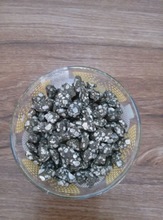Talc?Lumps Supplier In China/ Talc?Lumps Factory Prcie
Specifications
| Typical uses include: | |
| ? |
|
| ? |
|
| ? |
|
| ? |
|
| ? | |
| ? | Ceramics |
| ? | |
| ? | Talc powder is increasingly being used in the manufacturing of artwares, jars, wall and floor tiles. It serves as a non-plastic ceramic material. The addition of talc powder in suitable proportions in the body of mixtures for porcelain, jars etc. prevents the crazing (cracking) effect on the glazes. The proportion of talc powder in the ceramic body may go upto 80%. It is valued for its refractoriness and stability, as well as extremely low shrinkage at high temperature. Talc powder converts into clino-enstatite at about 1300C. Between 800C to 840C, the water molecules are driven off and talc powder dissociates into enstatite and amorphous silica without undergoing any change in shape, the shrinkage being 0.0005 inch only. |
| ? | |
| ? | Electrical Industry |
| ? | |
| ? | In the manufacturing of ceramic electric goods, the talc should not contain more than 1.5% FeO and CaO. Some consumers do not regard CaO as having any harmful effect. Steatite suitable for the manufacture of 'lava' insulators must be dense, compact, uniform and homogeneous intexture, free from any inclusion and parting planes. It should not contain CaO more than 1.5% and Fe2O3; more than 1%. The iron oxide is a colourant and gives the fired shapes an unattractive colour. An increase of iron oxide above two per cent decreases the 'Q' value (ratio of reactance to resistance) and increases the dielectric constant. CaO imparts abrasiveness and usually a short vitrification range and sometimes a high firing shrinkage. |
| ? | |
?
?
Characteristics:
?
Talc has good lubricity,refractory nature,acid proof,insulativity,high melt point,unreactiveness,good hiding power,softness,good luster,high absorbaility,In addition,since its crystal structure is stratiform,talc is easy to split into scale and has special lubricity.
?
????? ???
?? ? ?
























 Chat online
Chat online


























